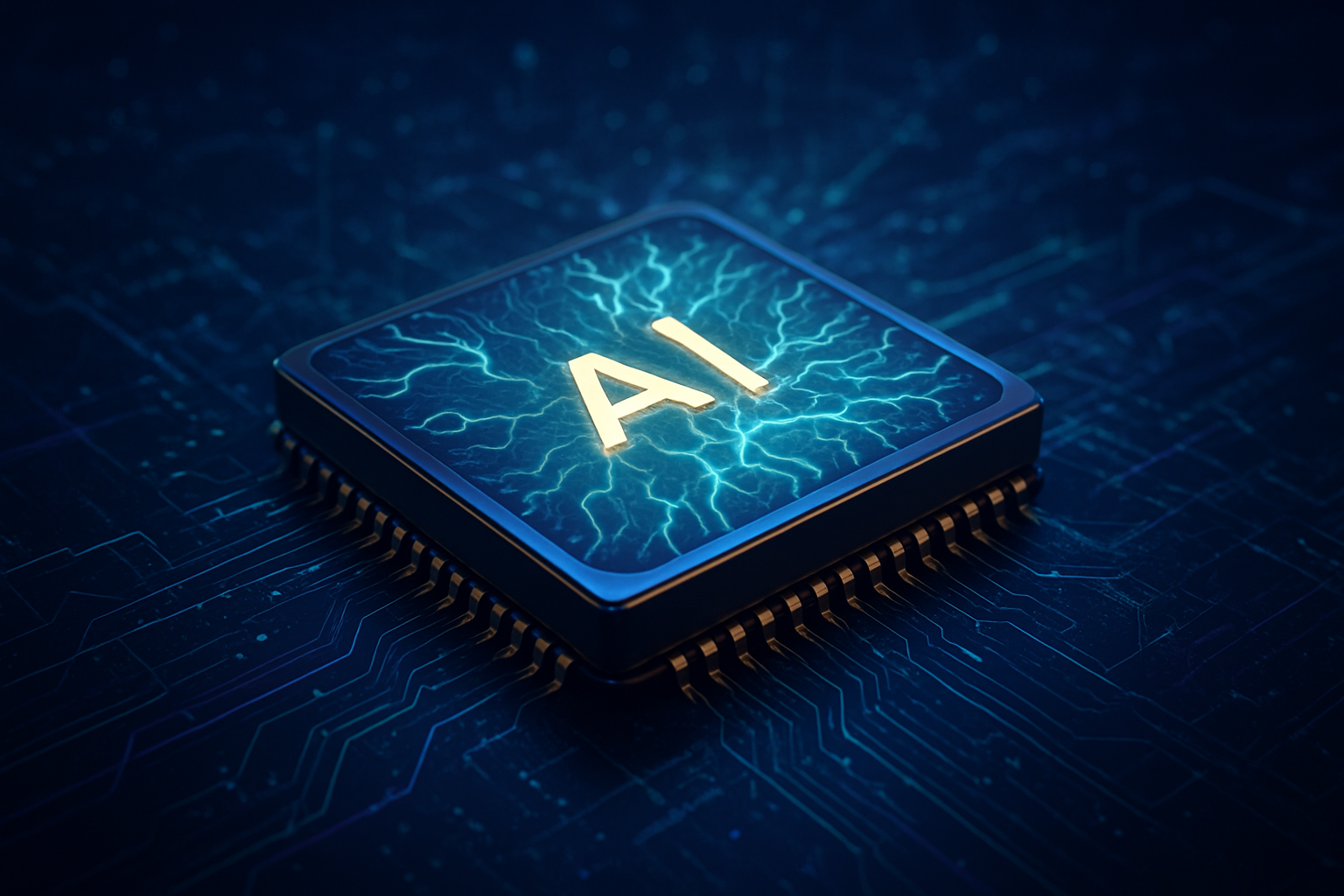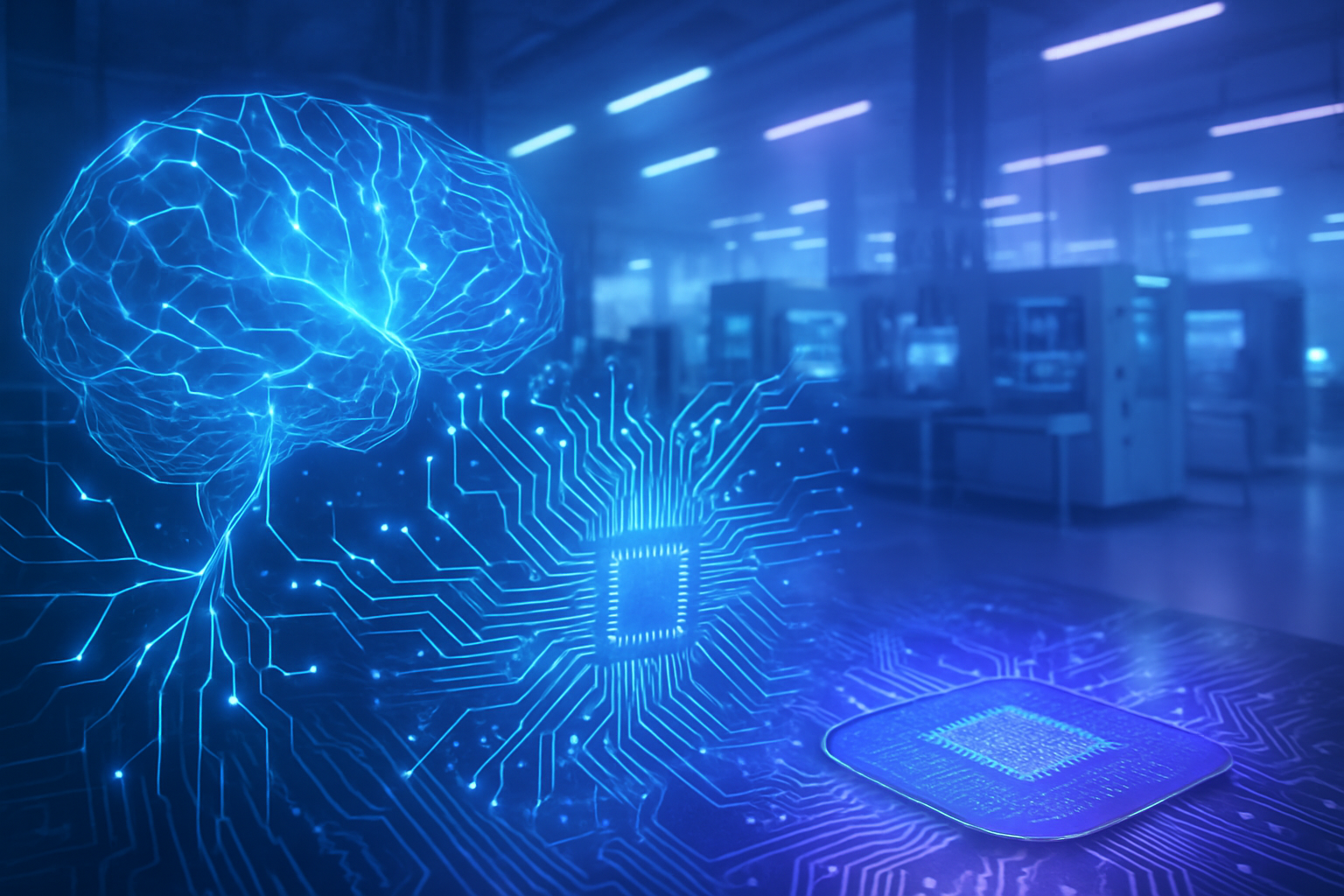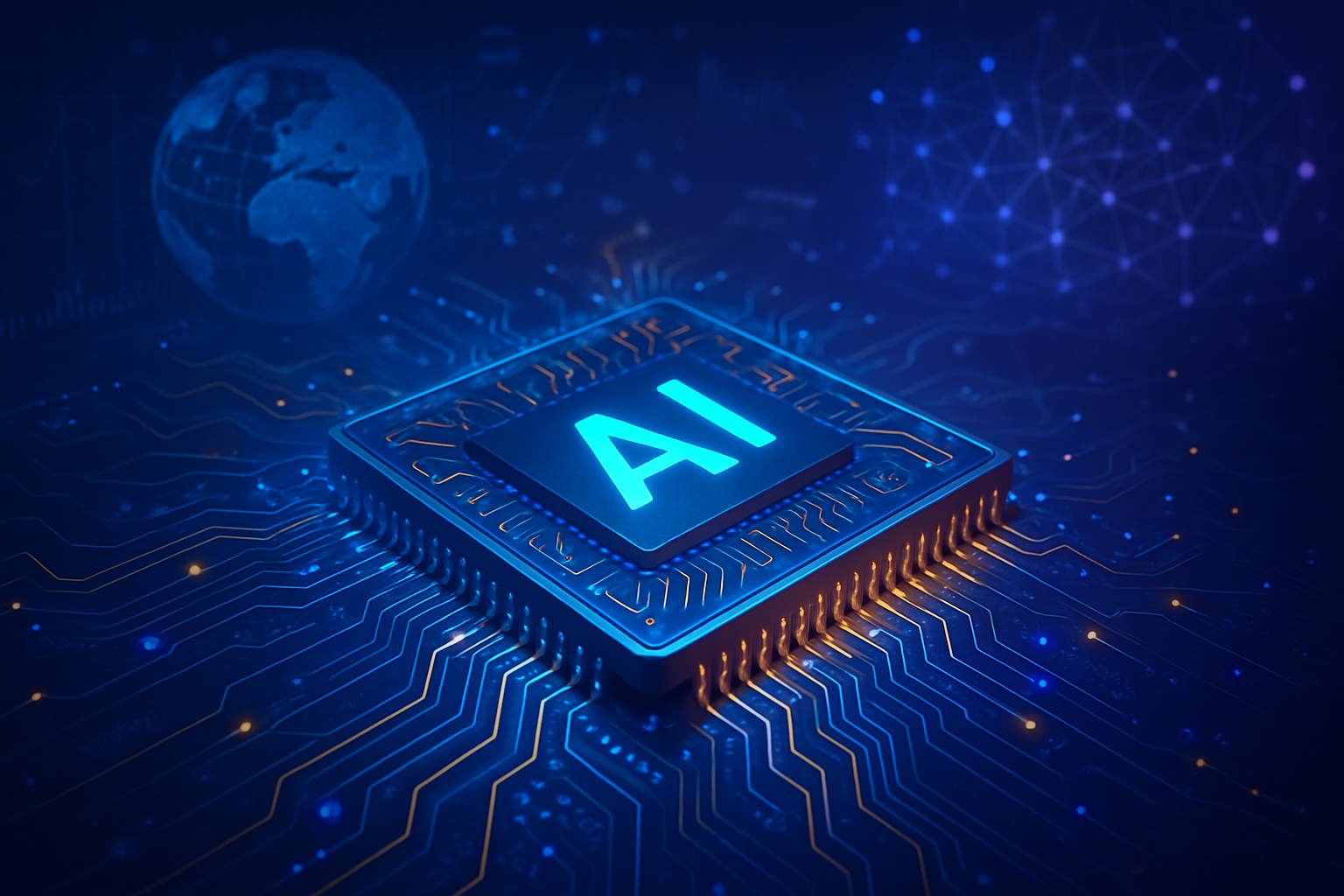The symbiotic relationship between Artificial Intelligence (AI) and semiconductor technology has entered an unprecedented era, with AI not only driving an insatiable demand for more powerful chips but also fundamentally reshaping their design, manufacturing, and future development. This AI Supercycle, as industry experts term it, is accelerating innovation across the entire semiconductor value chain, promising to redefine the capabilities of computing and intelligence itself. As of October 23, 2025, the impact is evident in surging market growth, the emergence of specialized hardware, and revolutionary changes in chip production, signaling a profound shift in the technological landscape.
This transformative period is marked by a massive surge in demand for high-performance semiconductors, particularly those optimized for AI workloads. The explosion of generative AI (GenAI) and large language models (LLMs) has created an urgent need for chips capable of immense computational power, driving semiconductor market projections to new heights, with the global market expected to reach $697.1 billion in 2025. This immediate significance underscores AI's role as the primary catalyst for growth and innovation, pushing the boundaries of what silicon can achieve.
The Technical Revolution: AI Designs Its Own Future
The technical advancements spurred by AI are nothing short of revolutionary, fundamentally altering how chips are conceived, engineered, and produced. AI is no longer just a consumer of advanced silicon; it is an active participant in its creation.
Specific details highlight AI's profound influence on chip design through advanced Electronic Design Automation (EDA) tools. Companies like Synopsys (NASDAQ: SNPS) with its DSO.ai (Design Space Optimization AI) and Cadence Design Systems (NASDAQ: CDNS) with its Cerebrus AI Studio are at the forefront. Synopsys DSO.ai, the industry's first autonomous AI application for chip design, leverages reinforcement learning to explore design spaces trillions of times larger than previously possible, autonomously optimizing for power, performance, and area (PPA). This has dramatically reduced design optimization cycles for complex chips, such as a 5nm chip, from six months to just six weeks—a 75% reduction in time-to-market. Similarly, Cadence Cerebrus AI Studio employs agentic AI technology, allowing autonomous AI agents to orchestrate complete chip implementation flows, offering up to 10x productivity and 20% PPA improvements. These tools differ from previous manual and iterative design approaches by automating multi-objective optimization and exploring design configurations that human engineers might overlook, leading to superior outcomes and unprecedented speed.
Beyond design, AI is driving the emergence of entirely new semiconductor architectures tailored for AI workloads. Neuromorphic chips, inspired by the human brain, represent a significant departure from traditional Von Neumann architectures. Examples like IBM's TrueNorth and Intel's Loihi 2 feature millions of programmable neurons, processing information through spiking neural networks (SNNs) in a parallel, event-driven manner. This non-Von Neumann approach offers up to 1000x improvements in energy efficiency for specific AI inference tasks compared to traditional GPUs, making them ideal for low-power edge AI applications. Neural Processing Units (NPUs) are another specialized architecture, purpose-built to accelerate neural network computations like matrix multiplication and addition. Unlike general-purpose GPUs, NPUs are optimized for AI inference, achieving similar or better performance benchmarks with exponentially less power, making them crucial for on-device AI functions in smartphones and other battery-powered devices.
In manufacturing, AI is transforming fabrication plants through predictive analytics and precision automation. AI-powered real-time monitoring, predictive maintenance, and advanced defect detection are ensuring higher quality, efficiency, and reduced downtime. Machine learning models analyze vast datasets from optical inspection systems and electron microscopes to identify microscopic defects with up to 95% accuracy, significantly improving upon earlier rule-based techniques that were around 85%. This optimization of yields, coupled with AI-driven predictive maintenance reducing unplanned downtime by up to 50%, is critical for the capital-intensive semiconductor industry. Initial reactions from the AI research community and industry experts have been overwhelmingly positive, recognizing AI as an indispensable force for managing increasing complexity and accelerating innovation, though concerns about AI model verification and data quality persist.
Corporate Chessboard: Winners, Disruptors, and Strategic Plays
The AI-driven semiconductor revolution is redrawing the competitive landscape, creating clear beneficiaries, disrupting established norms, and prompting strategic shifts among tech giants, AI labs, and semiconductor manufacturers.
Leading the charge among public companies are AI chip designers and GPU manufacturers. NVIDIA (NASDAQ: NVDA) remains dominant, holding significant pricing power in the AI chip market due to its GPUs being foundational for deep learning and neural network training. AMD (NASDAQ: AMD) is emerging as a strong challenger, expanding its CPU and GPU offerings for AI and actively acquiring talent. Intel (NASDAQ: INTC) is also making strides with its Xeon Scalable processors and Gaudi accelerators, aiming to regain market footing through its integrated manufacturing capabilities. Semiconductor foundries are experiencing unprecedented demand, with Taiwan Semiconductor Manufacturing Company (TSMC) (NYSE: TSM) manufacturing an estimated 90% of the chips used for training and running generative AI systems. EDA software providers like Synopsys and Cadence Design Systems are indispensable, as their AI-powered tools streamline chip design. Memory providers such as Micron Technology (NASDAQ: MU) are also benefiting from the demand for High-Bandwidth Memory (HBM) required by AI workloads.
Major AI labs and tech giants like Google, Amazon (NASDAQ: AMZN), Microsoft (NASDAQ: MSFT), and Meta (NASDAQ: META) are increasingly pursuing vertical integration by designing their own custom AI silicon—examples include Google's Axion and TPUs, Microsoft's Azure Maia 100, and Amazon's Trainium. This strategy aims to reduce dependence on external suppliers, control their hardware roadmaps, and gain a competitive moat. This vertical integration poses a potential disruption to traditional fabless chip designers who rely solely on external foundries, as tech giants become both customers and competitors. Startups such as Cerebras Systems, Etched, Lightmatter, and Tenstorrent are also innovating with specialized AI accelerators and photonic computing, aiming to challenge established players with novel architectures and superior efficiency.
The market is characterized by an "infrastructure arms race," where access to advanced fabrication capabilities and specialized AI hardware dictates competitive advantage. Companies are focusing on developing purpose-built AI chips for specific workloads (training vs. inference, cloud vs. edge), investing heavily in AI-driven design and manufacturing, and building strategic alliances. The disruption extends to accelerated obsolescence for less efficient chips, transformation of chip design and manufacturing processes, and evolution of data centers requiring specialized cooling and power management. Consumer electronics are also seeing refresh cycles driven by AI-powered features in "AI PCs" and "generative AI smartphones." The strategic advantages lie in specialization, vertical integration, and the ability to leverage AI to accelerate internal R&D and manufacturing.
A New Frontier: Wider Significance and Lingering Concerns
The AI-driven semiconductor revolution fits into the broader AI landscape as a foundational layer, enabling the current wave of generative AI and pushing the boundaries of what AI can achieve. This symbiotic relationship, often dubbed an "AI Supercycle," sees AI demanding more powerful chips, while advanced chips empower even more sophisticated AI. It represents AI's transition from merely consuming computational power to actively participating in its creation, making it a ubiquitous utility.
The societal impacts are vast, powering everything from advanced robotics and autonomous vehicles to personalized healthcare and smart cities. AI-driven semiconductors are critical for real-time language processing, advanced driver-assistance systems (ADAS), and complex climate modeling. Economically, the global market for AI chips is projected to surpass $150 billion by 2025, contributing an additional $300 billion to the semiconductor industry's revenue by 2030. This growth fuels massive investment in R&D and manufacturing. Technologically, these advancements enable new levels of computing power and efficiency, leading to the development of more complex chip architectures like neuromorphic computing and heterogeneous integration with advanced packaging.
However, this rapid advancement is not without its concerns. Energy consumption is a significant challenge; the computational demands of training and running complex AI models are skyrocketing, leading to a dramatic increase in energy use by data centers. U.S. data center CO2 emissions have tripled since 2018, and TechInsights forecasts a 300% increase in CO2 emissions from AI accelerators alone between 2025 and 2029. Geopolitical risks are also paramount, with the race for advanced semiconductor technology becoming a flashpoint between nations, leading to export controls and efforts towards technological sovereignty. The concentration of over 90% of the world's most advanced chip manufacturing in Taiwan and South Korea creates critical supply chain vulnerabilities. Furthermore, market concentration is a concern, as the economic gains are largely consolidated among a handful of dominant firms, raising questions about industry resilience and single points of failure.
In terms of significance, the current era of AI-driven semiconductor advancements is considered profoundly impactful, comparable to, and arguably surpassing, previous AI milestones like the deep learning breakthrough of the 2010s. Unlike earlier phases that focused on algorithmic improvements, this period is defined by the sheer scale of computational resources deployed and AI's active role in shaping its own foundational hardware. It represents a fundamental shift in ambition and scope, extending Moore's Law and operationalizing AI at a global scale.
The Horizon: Future Developments and Expert Outlook
Looking ahead, the synergy between AI and semiconductors promises even more transformative developments in both the near and long term, pushing the boundaries of what is technologically possible.
In the near term (1-3 years), we can expect hyper-personalized manufacturing and optimization, with AI dynamically adjusting fabrication parameters in real-time to maximize yield and performance. AI-driven EDA tools will become even more sophisticated, further accelerating chip design cycles from system architecture to detailed implementation. The demand for specialized AI chips—GPUs, ASICs, NPUs—will continue to soar, driving intense focus on energy-efficient designs to mitigate the escalating energy consumption of AI. Enhanced supply chain management, powered by AI, will become crucial for navigating geopolitical complexities and optimizing inventory. Long-term (beyond 3 years) developments include a continuous acceleration of technological progress, with AI enabling the creation of increasingly powerful and specialized computing devices. Neuromorphic and brain-inspired computing architectures will mature, with AI itself being used to design and optimize these novel paradigms. The integration of quantum computing simulations with AI for materials science and device physics is on the horizon, promising to unlock new materials and architectures. Experts predict that silicon hardware will become almost "codable" like software, with reconfigurable components allowing greater flexibility and adaptation to evolving AI algorithms.
Potential applications and use cases are vast, spanning data centers and cloud computing, where AI accelerators will drive core AI workloads, to pervasive edge AI in autonomous vehicles, IoT devices, and smartphones for real-time processing. AI will continue to enhance manufacturing and design processes, and its impact will extend across industries like telecommunications (5G, IoT, network management), automotive (ADAS), energy (grid management, renewables), healthcare (drug discovery, genomic analysis), and robotics. However, significant challenges remain. Energy efficiency is paramount, with data center power consumption projected to triple by 2030, necessitating urgent innovations in chip design and cooling. Material science limitations are pushing silicon technology to its physical limits, requiring breakthroughs in new materials and 2D semiconductors. The integration of quantum computing, while promising, faces challenges in scalability and practicality. The cost of advanced AI systems and chip development, data privacy and security, and supply chain resilience amidst geopolitical tensions are also critical hurdles. Experts predict the global AI chip market to exceed $150 billion in 2025 and reach $400 billion by 2027, with AI-related semiconductors growing five times faster than non-AI applications. The next phase of AI will be defined by its integration into physical systems, not just model size.
The Silicon Future: A Comprehensive Wrap-up
In summary, the confluence of AI and semiconductor technology marks a pivotal moment in technological history. AI is not merely a consumer but a co-creator, driving unprecedented demand and catalyzing radical innovation in chip design, architecture, and manufacturing. Key takeaways include the indispensable role of AI-powered EDA tools, the rise of specialized AI chips like neuromorphic processors and NPUs, and AI's transformative impact on manufacturing efficiency and defect detection.
This development's significance in AI history is profound, representing a foundational shift that extends Moore's Law and operationalizes AI at a global scale. It is a collective bet on AI as the next fundamental layer of technological progress, dwarfing previous commitments in its ambition. The long-term impact will be a continuous acceleration of technological capabilities, enabling a future where intelligence is deeply embedded in every facet of our digital and physical world.
What to watch for in the coming weeks and months includes continued advancements in energy-efficient AI chip designs, the strategic moves of tech giants in custom silicon development, and the evolving geopolitical landscape influencing supply chain resilience. The industry will also be closely monitoring breakthroughs in novel materials and the initial steps towards practical quantum-AI integration. The race for AI supremacy is inextricably linked to the race for semiconductor leadership, making this a dynamic and critical area of innovation for the foreseeable future.
This content is intended for informational purposes only and represents analysis of current AI developments.
TokenRing AI delivers enterprise-grade solutions for multi-agent AI workflow orchestration, AI-powered development tools, and seamless remote collaboration platforms.
For more information, visit https://www.tokenring.ai/.








